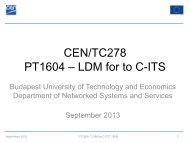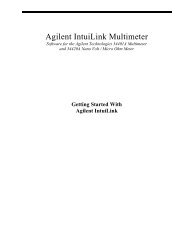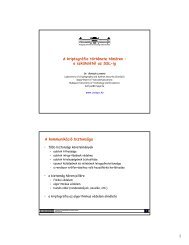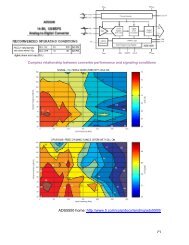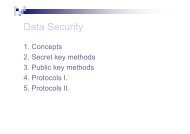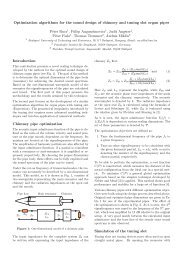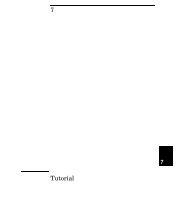IntuiLink Waveform Editor
IntuiLink Waveform Editor
IntuiLink Waveform Editor
You also want an ePaper? Increase the reach of your titles
YUMPU automatically turns print PDFs into web optimized ePapers that Google loves.
This article appeared on the Test & Measurement World web site at www.tmworld.com.<br />
Filter your data in software<br />
Werner Haussmann, Agilent Technologies, Loveland, CO -- 4/1/2002<br />
Test & Measurement World<br />
When you capture waveform data, you often want to process the data to extract information about<br />
the signal or to extract a particular wave shape. Filters—analog or digital—often provide the<br />
signal processing you need. Analog filters process signals before you digitize them. Digital filters,<br />
which apply software algorithms to digitized waveforms, can work in digital signal processors for<br />
"real-time" filtering. You can also use digital filters that run on a PC to process data you've<br />
already captured.<br />
Filters act on specific frequency components. With a filter, you can isolate wanted frequencies<br />
(pass band) from unwanted frequencies (stop band). Digital filters isolate frequencies by applying<br />
mathematical formulas called transfer functions to data points. The characteristics of a transfer<br />
function define a filter's frequency response.<br />
While working on a recent project, I needed to capture a signal, remove unwanted high-frequency<br />
noise, and store the "clean" signal in a file. Then, I needed to load the clean signal data into a<br />
waveform generator.<br />
To filter the data, I developed a digital filter<br />
in Visual Basic 6.0 that runs under Windows<br />
98 or 2000 (I haven't tested it under XP).<br />
The filter works on data I've already<br />
captured, plots raw and filtered data, and<br />
displays a filter's frequency response.<br />
Figure 1 shows how well the filter removes<br />
noise from a sine wave.<br />
You can download a free copy of the filter,<br />
which resides in an ActiveX control, and<br />
use it in your own programs or in an<br />
application program I wrote. ("Using the<br />
filter," below.) You also can download the<br />
complete source code for the filter control<br />
and the accompanying application.<br />
Figure 1. A digital filter removes unwanted<br />
frequency components such as noise from the<br />
upper trace to produce the filtered lower trace.



